North Sulawesi Traditional Clothing
Traditional clothes from North Sulawesi has its own color that adds to the variety of cultures that exist in Indonesia.
The traditional clothes from North Sulawesi are still preserved to this day.
There are various kinds of traditional clothes from North Sulawesi which have different patterns in each outfit.
To find out what these traditional clothes are, let's see this article until the end.
List of North Sulawesi Traditional Clothing
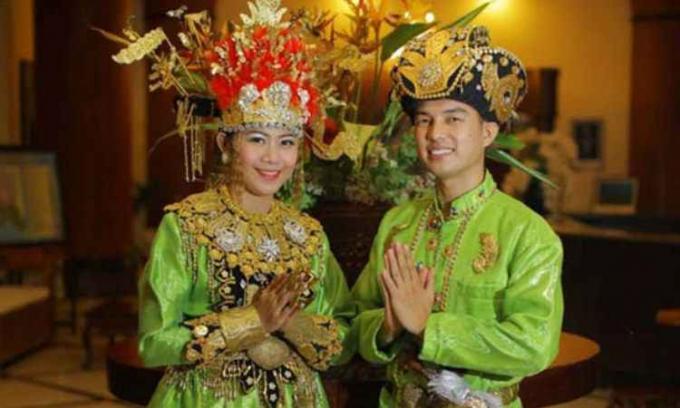
Like traditional clothing from other regions, traditional clothing from North Sulawesi also has unique characteristics depending on the tribe that inhabits it.
In North Sulawesi there are at least 5 different tribes, namely the Manado Tribe, the Gorontalo Tribe, the Minahasa Tribe, the Bolaang Mongondow Tribe, and the Sangihe Talaud Tribe.
The traditional clothes of each tribe are almost the same, it's just that the accessories and equipment used are different from one another.
Here are the traditional clothes from North Sulawesi that you should know:
Table of contents
1. Gorontalo Traditional Clothing (Makuta and Biliu)
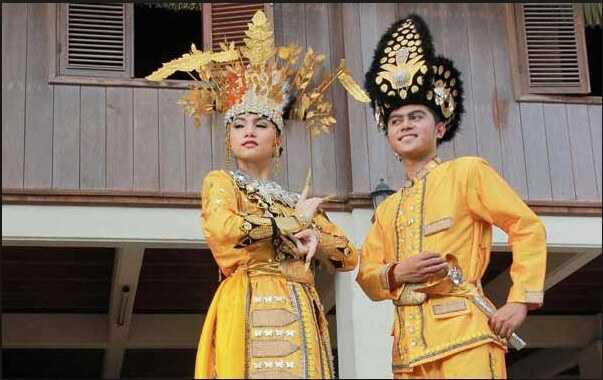
Makuta is a traditional dress for men from the Gorontalo tribe. Makuta consists of a top in the form of a shirt combined with trousers.
Do not forget that the traditional clothes are equipped with various supporting accessories such as a makuta hood to cover the head, pasimeni, and meatball necklaces.
Meanwhile, biliu is a traditional dress for women of the Gorontalo tribe which is usually green or yellow in color.
Biliu consists of a top shaped like a kebaya but without a motif equipped with a sarong at the bottom.
Don't forget to add a variety of additional accessories to support the appearance.
Each accessory can symbolize several meanings, including the following:
- Amethyst worn on the chest, symbolizes a strong nature when facing problems.
- Lai – Lai worn on the crown of the head, symbolizes purity and courage.
- Baya Lo Boute or headband for women's hair.
- Padeta bracelet to decorate the wrist.
- Belt to fasten the sarong used by women.
Makuta and Biliu are made from raw cotton that has been spun into yarn.
These traditional clothes are usually used for weddings which are commonly called Walimono and Payungga.
2. Minahasa Traditional Clothing (Bajang)
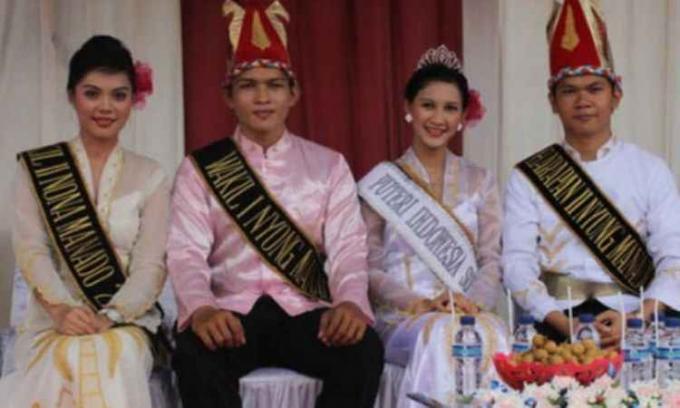
Bajang is the name of the traditional clothing of North Sulawesi originating from the Minahasa tribe.
The Minahasa tribe is one of the tribes in North Sulawesi and is one of the most advanced tribes of other tribes.
The progress of the Minahasa tribe can be proven by the ability of its people to spin cotton to make cloth.
With these activities, the Minahasa community can weave and make comfortable fabrics for use in their daily activities.
The result of the cloth is called the Bajang. Bajang consists of tops and bottoms.
Bajang tops for women are usually a kebaya combined with a subordinate cloth called yapon.
This Yapon usually has a color that matches or matches the top of the shirt.
To complete their appearance, women from this tribe usually add accessories such as hair buns, neck, arms, and ears.
While the Bajang top for men is usually a shirt combined with a sarong as a subordinate.
Don't forget, the men also use ties and headbands or triangular head coverings to support their appearance.
3. Bolaang Mongondow Traditional Clothing (Lanut)

Lanut is wood fiber from the bark or midrib of pineapple which is used as the traditional clothing of the Bolaang Mongondow Tribe.
Before becoming traditional clothes, the wood fibers are first woven into cloth, then the cloth is sewn to become traditional clothes that are used every day.
The traditional clothes of this tribe are influenced by Malay culture. This can be seen from the model of traditional clothing.
Lanut for men consists of a top or baniang shirt, trousers, sarong, and is equipped with a headband.
While lanut for women consists of cloth and kebaya or salu
And there is also lanut for nobles which is definitely different from lanut for ordinary people.
The difference is in the accessories used, which are more luxurious with a striking gold or red color.
The traditional clothes of the Bolaang Mongondow Tribe are closely related to the background of people's lives in the past.
The structure of society with a royal nuance creates a firm social stratification.
Differentiating the social status of the people using this traditional dress.
In ancient times this traditional clothing was only used during certain events. However, as the times progressed, these traditional clothes could be used for daily activities.
4. Sangihe Talaud Traditional Clothing (Laku Tepu)
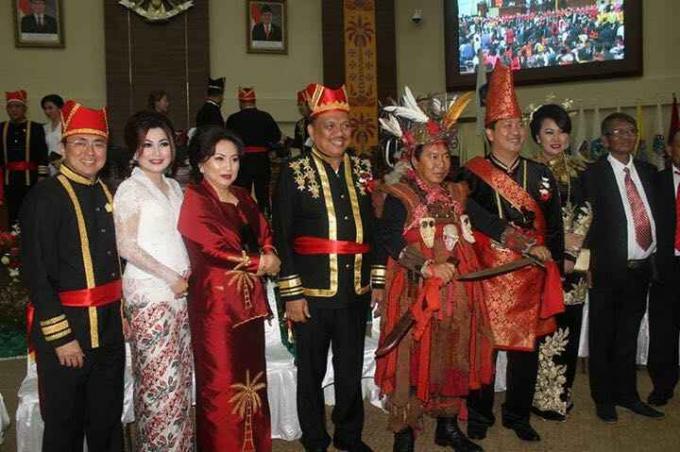
Laku Tepu is a traditional dress of North Sulawesi originating from the Sangihe Talaud Tribe which is often used during the Tulude ceremony.
This traditional clothing is made of kofo fiber or banana plant fiber which is known to be strong and easy to spun to make clothes.
The fiber is then woven and spun to become a piece of clothing known as Laku Tepu.
Usually these traditional clothes are brightly colored, such as red, green, or yellow.
Laku Tepu itself is a type of clothing that has long sleeves, with strands sticking out to the heels.
There are several accessories that are used to complete the use of this traditional clothing, including the following:
- Popehe or belt.
- Bandang or scarf on the shoulder.
- Paporong or headgear.
- Kahiwu or tassel skirt.
- Boto dizzie for the bun.
- Sasusu boto for buns that beautify the bun.
Usually men and women use these accessories.
The traditional clothing of tepu behavior can also distinguish the social status of the Sangihe Talaud people only from the color.
Here are the traditional clothing of tepu behavior along with the colors, accessories, and wearers:
- The traditional clothes for government are blue, red, and yellow.
- The traditional clothes for the ritual are red or purple, which are complemented by a scarf.
- Traditional clothing for weddings uses topo-topo editing accessories in the form of a head covering.
5. Traditional Clothing of Tonaas Wangko and Walian Wangko
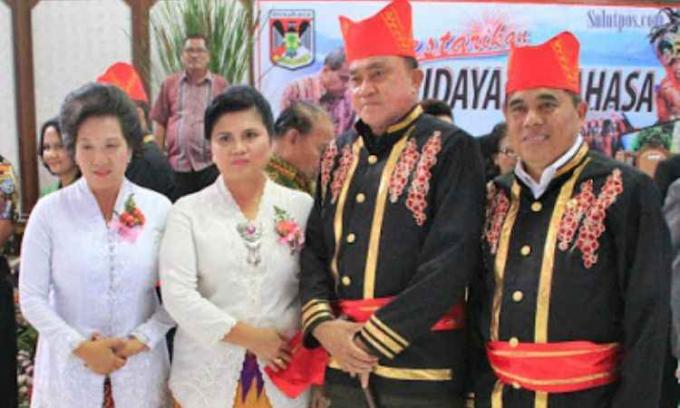
Tonaas Wangko is a traditional clothing in the form of a long-sleeved shirt that has a high collar and buttons but has no pockets.
This traditional dress has a red color with a golden yellow rice flower motif.
The rice flower motif is located on the neck of the shirt and on the front end of the shirt.
Usually the use of tonaas wangko is equipped with a red hat which also has a golden yellow motif engraved.
Meanwhile, Walian Wangko is a traditional dress which is a modification of Tonaas Wangko.
Walian wangko is longer when compared to tonass wangko like a robe or robe.
Walian wangko also has a rice flower motif decoration, but the color of this shirt is white.
Don't forget to also wear a porong nimiles hat, which is made of two red, black and gold yellow fabrics wrapped around it.
This porong nimiles hat can symbolize the union of 2 elements of nature, namely heaven and earth and the world and the afterlife.
While clothes for women usually use a long kebaya in white or purple.
The kebaya is usually combined with a dark batik sarong and is also equipped with a crown hat, a yellow or red sash, a neck necklace, slippers, and a bun.
The two clothes are traditional opening garments which until now have become models in the manufacture of various kinds of traditional clothing in North Sulawesi.
6. Kohongian Traditional Clothing
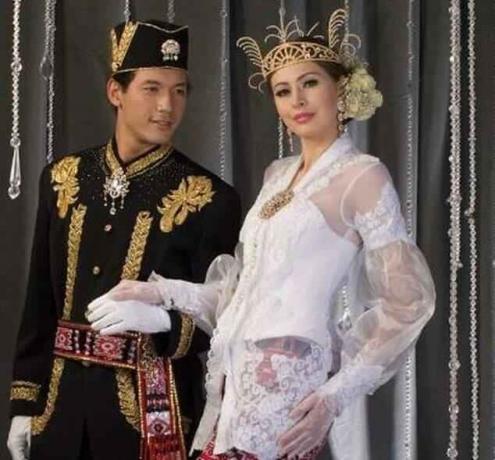
The kohongian is a traditional attire that can only be worn by one level below the nobility at the time of the wedding.
So this traditional dress is exclusive, in the sense that not just anyone can wear it.
But for now it seems that there are no castes in social status in Indonesia.
All are equal and all have access to wear these traditional clothes.
7. Simpal Traditional Clothing
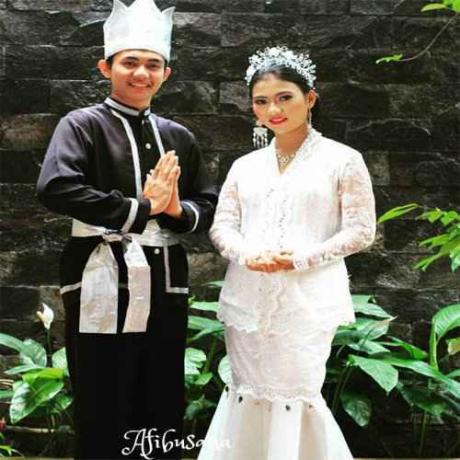
Simpal is a traditional dress that has almost the same function as the Kohongian traditional clothes.
This simpal is also a traditional dress that can only be used by the government companions in the kingdom at the time of the wedding.
So this traditional clothing also has an exclusive nature, in the sense that not just anyone can wear it.
Conclusion
Indonesia is a country with an abundance of diverse cultures, and North Sulawesi is no exception.
This North Sulawesi province, has so many types of traditional clothes that are of very high value. Even on each of his traditional clothes, has an amazing meaning and history.
To maintain this cultural diversity title, we as the next generation should continue to preserve the existing cultures.
